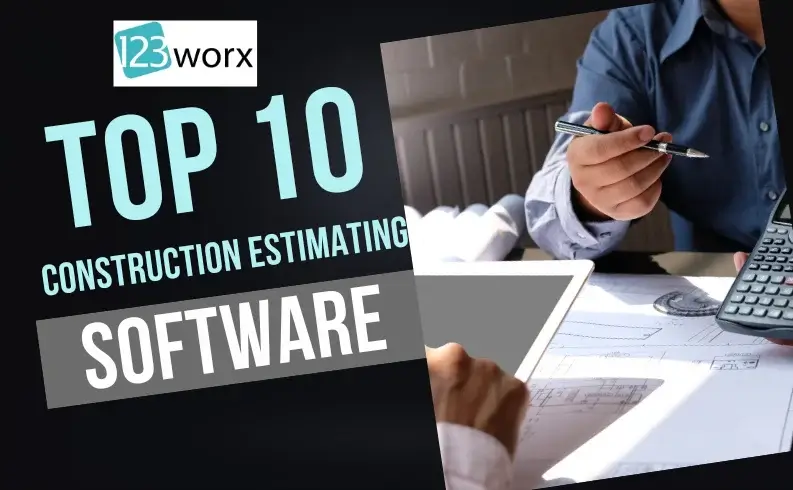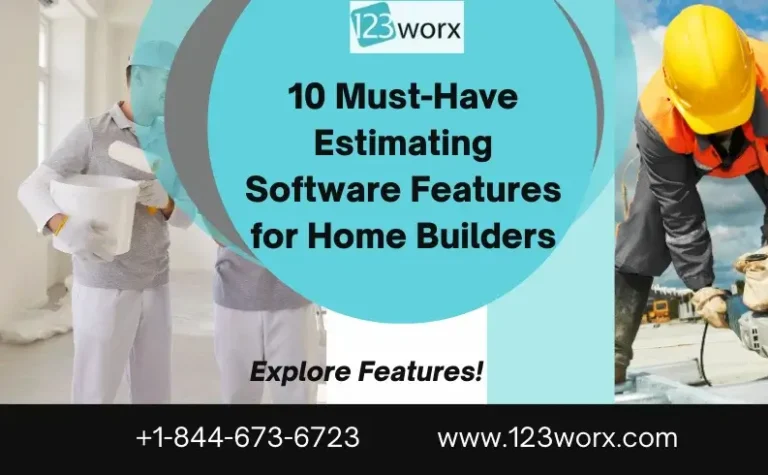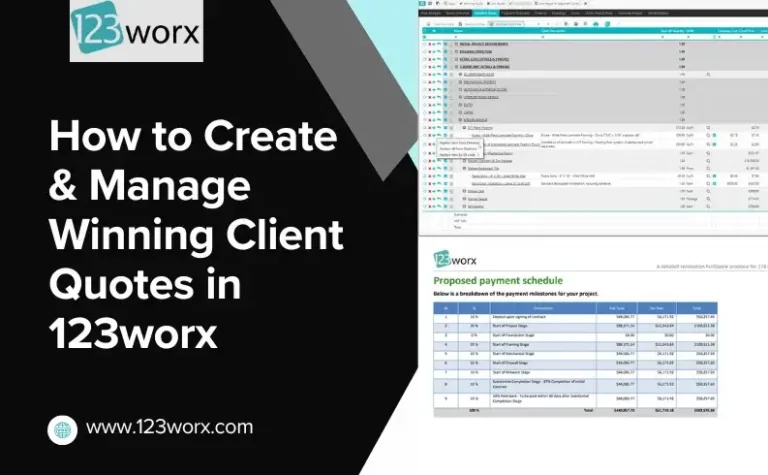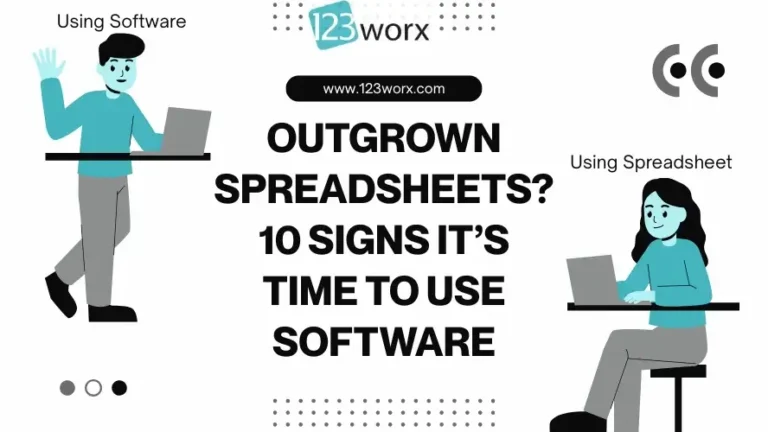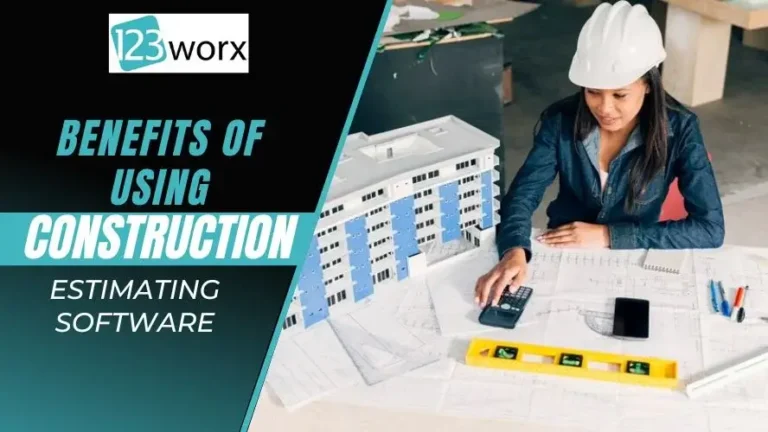Choosing the right construction estimating software can mean the difference between winning bids, maintaining profitability, and staying on schedule in 2026. With tighter deadlines, rising material costs, and remote collaboration becoming the norm, contractors need cloud-based, accurate, and scalable estimating tools.
In this guide, we compare the top 10 construction estimating software platforms, analyzing for pricing, features, integrations, and best-fit use cases. Whether you’re a small contractor, remodeler, MEP specialist, or enterprise builder, this list will help you find the ideal tool.
What is Construction Estimating Software?
Construction estimating software is a digital tool that helps contractors and builders calculate project costs, including materials, labor, equipment, and overhead. These platforms replace error-prone spreadsheets with automated takeoffs, integrated pricing databases, and real-time collaboration.
Key benefits include:
- Faster and more accurate estimates
- Reduced risk of cost overruns
- Professional client proposals
- Seamless integration with accounting and project management tools
Whether you’re a trade professional, residential builder, remodeler, or general contractor, there’s a solution tailored specifically for you.
Let’s discover our top construction estimating software choices for 2026.
Key Criteria for Choosing the Best Estimating Software
When selecting construction estimating software in 2026, consider:
- Accuracy & Automation: Does the tool automate processes and/or reduce human error by utilizing AI or libraries?
- Cloud-Based Collaboration Tools: Cloud-based real-time teamwork and collaboration features
- Digital Takeoffs & 2D/3D Support: Visual takeoffs and estimating plans
- Integration: Incorporate with QuickBooks, project management tools, and supplier tools
- User Experience: Simple, clean interface, easy to use, and user-friendly
- Customization: Templates, assemblies, and markups have customizable features
- Pricing Flexibility: Pricing flexibility for small businesses without compromising features
Here’s a list of the top 10 popular construction estimating software options for builders & contractors, focusing on their strengths and ideal user types: ProEst, STACK, PlanSwift, Buildxact, Sage, 123worx, Clear Estimates, Esticom, CoConstruct. Find detailed features of each software to select the best for your needs.
Prefer watching instead of reading? Check out our quick video where we break down the top construction estimating software for small contractors and explain why 123worx is the ideal choice for growing businesses.
Top 10 Construction Estimating Software Platforms in 2026
- ProEst (Best for Enterprise-Grade Estimating)
- STACK (Most appropriate for Speed and Collaboration)
- PlanSwift (Best for Detailed Desktop Takeoffs)
- Buildxact (Best for Small Builders & Remodelers)
- Sage Estimating (Best for Enterprise Workflows)
- 123worx Construction Estimating Software (Best for Small to Medium Contractors)
- Clear Estimates (Best for Remodelers on a Budget)
- Esticom (Best for MEP Contractors)
- CoConstruct (Best for Custom Home Builders)
- Contractor Foreman (Best for Value and User-Friendliness)
Let’s have a look at by one and explore the features to decide which one is best for your business.
1. ProEst (Best for Enterprise-Grade Estimating)
ProEst is one of the most powerful enterprise-level construction estimating software platforms. This software is used for estimating, electronic takeoff, bid management, CRM, and reporting, all within the same application. ProEst offers large cost databases and highly customizable report templates, making it a good fit for companies that take on larger, complex projects.
The software enables collaborative work with extended teams alongside seamless integration with top industry solutions such as Procore, Viewpoint, and QuickBooks. Powerful analytics available with ProEst help managers to forecast costs, track estimate history, and more to make data-driven decisions.
Estimated Costs: Custom quotes starting at $5,000 per year for small teams.
Pros:
- Enterprise-grade estimating, bid building, and proposal power.
- This software supports collaboration among teams from different locations and handles large-scale commercial projects efficiently.
- The platform allows complete integration with both ERP systems and top construction project management software, along with accounting applications.
- Advanced customization and visualization options.
Cons:
- Expensive for small firms
- Longer onboarding and training curve
Our Verdict:
ProEst is best suited for enterprise-level contractors who need deep functionality, integrations, and data-driven forecasting. It’s overkill for small businesses but a powerful choice for large commercial work.
2. STACK (Most appropriate for Speed and Collaboration)
STACK is a construction takeoff and estimating software highly rated for its quick implementation and collaborative multi-user capabilities. It offers pre-construction online tools for residential contractors and commercial and specialty trade contractors. This can quickly perform takeoffs and produce accurate estimates from PDF blueprints or electronic plans through its user-friendly drag-and-drop interface.
It also allows users to invite team members and collaborate in real-time, and is best for growing businesses or teams spread far apart. Though its integration opportunities are few compared to others on this list, STACK is praised for excellent customer service and user experience.
Estimated Costs: It starts at $1,999 annually for single-user use.
Pros:
- Top choice for small-to-mid-size teams that are looking for speed.
- A user-friendly interface makes onboarding new users easy.
- Includes markup tools, cost codes, and exportable bid sheets.
- Excellent collaboration tools with live project sharing.
Cons:
- Limited integrations with accounting platforms
- Lacks enterprise-level depth
Our Verdict:
STACK is ideal for small to mid-sized teams who prioritize speed and teamwork. A smart choice for distributed teams but less suitable for enterprises that need deep integrations.
3. PlanSwift (Best for Detailed Desktop Takeoffs)
PlanSwift is a desktop-based estimating and electronic takeoff program utilized by thousands of contractors. It has point-and-click plan-measurement capability with excellent accuracy, and operators can construct formulas, assemblies, and markups for their own personalized processes. It’s particularly prized by contractors who demand high-level takeoff precision for challenging projects.
It’s not cloud-native but highly customizable. It offers a single upfront license cost and easily accessible plug-ins, and is ideal for businesses that desire desktop apps.
Estimated Cost: A one-time license fee of around $1,595.
Pros:
- Enables very precise, formula-based takeoff calculations for specialized projects.
- Hugely customizable with plugin possibilities and trade modules.
- Suit businesses that need offline access.
- Allows detailed customization of materials, prices, and templates.
Cons:
- No cloud access
- Lacks modern collaboration features
Our Verdict:
PlanSwift is perfect for contractors who value accuracy and offline access. Best for specialists who prefer a one-time investment rather than ongoing SaaS costs.
4. Buildxact (Best for Small Builders & Remodelers)
Buildxact integrates estimating, quotation management, jobs management, and customer communications into a single residential builder’s website. It involves basic quotation generation, live pricing changes, quotation requesting from suppliers, and a customer portal. The site is easy to use and does not require technical skills.
After experiencing Buildxact’s basic dashboards and ready-to-email quotes, you will see that digital transformation doesn’t have to be unpleasant.
Estimated Cost: It starts at $149/month
Pros:
- Ideal for small contractors transitioning from manual methods to cloud technologies.
- Offers comprehensive cost tracking, supplier comparisons by invoking quotes, and branded proposals.
- Streamlines end-to-end project work processes from estimate through invoice.
- It’s a user-friendly interface that saves time and increases estimate accuracy.
Cons:
- It may not be deep enough for large commercial or multi-unit projects.
Our Verdict:
Buildxact is a solid pick for remodelers and small contractors who want simplicity and efficiency without enterprise complexity.
5. Sage Estimating (Best for Enterprise Workflows)
Sage Estimating is part of the Sage Construction Suite and is geared towards enterprise high-volume estimating. It is fully integrated with Sage 300 and Sage 100 and offers cost modeling, bid comparisons, and historical estimate tracking.
This tool is highly scalable and used by large organizations for civil, infrastructure, and high-rise work. It does require training and integration support.
Estimated Costs: Personalized estimate, typically $10,000
Pros:
- Designed for large-scale business processes requiring complete cost models and cost structures.
- Works seamlessly with Sage accounting programs for complete project tracking.
- It allows multi-user access and large-scale database support for enterprise-scale collaboration.
- Offers historical estimate analysis for improved forecasting and predictability.
Cons:
- Expensive and requires training
- Not suited for smaller teams
Our Verdict:
Sage Estimating is the gold standard for enterprise contractors, particularly those already using Sage accounting. Not beginner-friendly, but unmatched for scalability.
6. 123worx (Best for All-in-One Contractor Management)
123worx is a single-source cloud-based construction software designed for small and medium-sized contractors who need a broader management platform rather than a specialized takeoff tool. It includes estimating capabilities that are ideal for generating accurate budgetary numbers and proposals, but does not currently support automated takeoffs or advanced estimating automations.
Where 123worx excels is in providing a complete suite of tools for project scheduling, budgeting, document management, CRM, and supplier coordination. This makes it an excellent solution for small businesses looking for an all-in-one cloud solution to run their operations.
Estimated Cost: Starting at $575 per month.
Pros:
- Comprehensive project management platform for small and mid-sized contractors.
- Real-time collaboration tools for teams, subs, and clients.
- Clean user interface and fast onboarding.
- Integrated document, scheduling, and cost management.
Cons:
- No automated takeoffs
- Estimating depth is less advanced than ProEst or Sage
Our Verdict:
123worx is best for contractors who want a complete management solution, not just estimating. Great balance for SMBs, though heavy users may miss advanced automation.
7. Clear Estimates (Best for Remodelers on a Budget)
Clear Estimates is a budget-friendly software created for remodelers. It provides RemodelMax pricing quarterly and is specifically tailored for ZIP codes in the United States. It enables remodelers to generate room-by-room estimates easily and create branded proposals.
Its user interface has ease of use as its design ethos and is therefore an excellent choice for non-technician home remodelers or contractors.
Estimated Cost: $59/month
Pros:
- Affordable, easy-to-use tool built with small contractors and remodelers in mind.
- Pre-loaded with region-specific cost data from RemodelMax.
- Facilitates rapid room-by-room estimating with professional PDF reports.
- Ideal for solo contractors who need fast quote generation.
Cons:
- Limited integrations
- Less customizable for advanced needs
Our Verdict:
Clear Estimates is perfect for solo remodelers and small contractors who need a quick, budget-friendly way to produce professional quotes.
8. Esticom (Best for MEP Contractors)
One of Procore’s acquisitions, Esticom, is a lightweight cloud estimating solution built for mechanical, electrical, and plumbing (MEP) contractors. It offers 2D takeoffs, master material lists, and speed quoting.
It stands out through fast estimate turnaround and integration with Procore, giving MEP companies a streamlined preconstruction process.
Estimated Costs: Starting at $1,200 per year.
Pros:
- This product serves the specialized needs of MEP (Mechanical, Electrical, Plumbing) trades.
- Allows for quick estimates to be created from computer drawings using drag and drop.
- Seamless integration with Procore for extended project management functionality.
- A cloud-based application that allows multiple users to collaborate and access from anywhere.
Cons:
- Limited to general contracting
- Lacks customization for other trades
Our Verdict:
Esticom is best for MEP contractors who already use or plan to use Procore. It’s specialized but highly efficient for its niche.
9. CoConstruct (Best for Custom Home Builders)
CoConstruct is a complete construction management solution that includes estimating functions and is aimed at custom homebuilders and design-build contractors. While project management lies at its heart, you can also use it to build detailed estimates, track budget variance, and report changes to homeowners.
It offers a client portal, scheduling, and financial tracking all in one system.
Estimated Costs: It starts at $99/month.
Pros:
- Most appropriate for homebuilders who want estimation and project management in one tool.
- Facilitates real-time communication with clients and budget tracking.
- Offers scheduling, timebooks, and change order management.
- Prepares personalized, branded proposals and detailed financial summaries for its clients.
Cons:
- Estimating is less advanced than ProEst/123worx
- Requires setup for full benefit
Our Verdict:
CoConstruct is a great fit for custom home builders who need both estimating and client management in one affordable tool.
10. Contractor Foreman (Best for Value and User-Friendliness)
Contractor Foreman is a construction management software with 30+ building tools for one low price. It provides cost estimating, daily logs, time tracking, safety checklists, and invoicing.
It is less feature-rich on native estimating functions compared to some other solutions on our list, but it is well-suited for small companies that want a no-frills, easy-to-use, and affordable solution with an all-in-one dashboard.
Estimated Costs: Starting from $49/month.
Pros:
- Small construction contractors will find the low price to be an unexpected benefit for accessing the full array of available tools.
- Integrates estimating, time tracking, safety checklists, and billing.
- Provides on-the-go estimating and record keeping with mobile use.
- Best usability and value for money for small and start-up businesses.
Cons:
- Estimating is not as deep as other tools
- Not ideal for high-budget or complex projects
Our Verdict:
Contractor Foreman offers the best value for small contractors, combining low cost with wide functionality. Perfect for those starting out.
How We Selected the Top Construction Estimating Software?
To create this list, we researched and evaluated over 25 construction software options. Just compared them based on cost, features, ratings, and relevance to the construction industry. We preferred solutions that offer:
- Have special features for small and medium-sized building companies
- Receive good word of mouth from customers and are updated frequently
- Provide cloud capability, user friendliness, and quality customer support
- Are flexible across trades (residential, electrical, remodeling, etc.)
- Transparent pricing and availability of demos
We thoroughly reviewed each tool by testing hands-on demos, using user ratings from websites like Capterra and G2, as well as the vendor’s release notes
Best Construction Estimating Software Comparison Table (2026 Edition)
| Software | Best For | Cloud-Based | Estimating Depth | Starting Price |
| 123worx | SMB Contractors | ✅ | High | $49/mo |
| ProEst | Enterprises | ✅ | Very High | $5,000/yr |
| STACK | Teams & Subs | ✅ | Medium | $1,999/yr |
| PlanSwift | Estimators | ❌ | High | $1,595 (one-time) |
| Buildxact | Residential Builders | ✅ | Medium | $149/mo |
| Sage | Enterprise Firms | ✅ | Very High | $10,000+/yr |
| Clear Estimates | Remodelers | ✅ | Medium | $59/mo |
| Esticom | MEP Trades | ✅ | Medium | $1,200/yr |
| CoConstruct | Home Builders | ✅ | Medium | $99/mo |
| Contractor Foreman | Small Firms | ✅ | Low-Med | $49/mo |
How to Choose the Right Estimating Software (Step-by-Step Guide)
- Define your project type (residential, commercial, MEP).
- Decide between desktop vs. cloud-based estimating software.
- Compare integrations with your accounting/project management stack.
- Test usability with a free trial before committing.
- Choose scalable software that grows with your business.
Expert Recommendations for The Ideal Estimating Tool
- Match Tool to Project Size: Do not overspend on enterprise functions if you work on 5–10 projects per year. 123worx and Buildxact are better for SMBs.
- Take Advantage Of Free Trials: At least test 2–3 platforms before deciding. Judge user friendliness and customizable reporting.
- Give Integrations Priority: Ensure it can integrate with your project or accounting software so there’s less manual data entry.
- Keep Training Requirements in Mind: Software like ProEst or Sage may require professional onboarding. If you are very busy, consider simple tools like Clear Estimates or 123worx.
- Think Long-Term: Choose programs that will accommodate growth. 123worx and STACK offer flexible growth.
Last Verdict – Which Estimate Software Is Good for You?
If you are an independent contractor, builder, remodeler, or small business owner and you want the best possible balance of affordability, usability, and features, then it’s 123worx all the way. With a focus on usability and the basics, 123worx was built for small businesses and independent contractors who need and want strong tools without the enterprise depth and cost.
From estimating home additions, electrical work, or full remodels, 123worx gives every small builder the competitive edge they need to win more projects and stay on budget. It’s the perfect solution for growing companies that need scalable building software built for growth.
Frequently Asked Questions (FAQs)
1: What is the cheapest estimating software?
Both Clear Estimates and Contractor Foreman are cheap, while 123worx offers more features for the money.
2: Is Cloud-Based Estimating Software Better?
Yes. It offers real-time collaboration, online access, and automatic updating, essential needs for today’s teams.
3: What’s the best remodeling software?
Buildxact, Clear Estimates, and 123worx were developed with remodelers.
4: Will cost overrun be prevented by estimating software?
Yes. Websites like 123worx track budget, fluctuations in pricing, and vendor bids to compare to keep expenses within budget.
5: How do I choose the best software for my building company?
Start by defining project types, budget sizes, and the number of teams. Pilot tools like 123worx through a demonstration before concluding.
Prefer watching instead of reading? Click here to watch our video review of the Top Construction Estimating Software for Small Contractors (2026) and see why 123worx stands out.

As a Vice President at 123worx, Construction Management Platform, Bharat Rudra has worked with hundreds of business executives searching for best-suited software for their construction business with a wide array of requirements. Bharat takes pride in helping construction businesses solve their business and project management challenges. Feel free to reach Bharat if you have any questions. You can find him on LinkedIn or reach him at brudra@123worx.com

